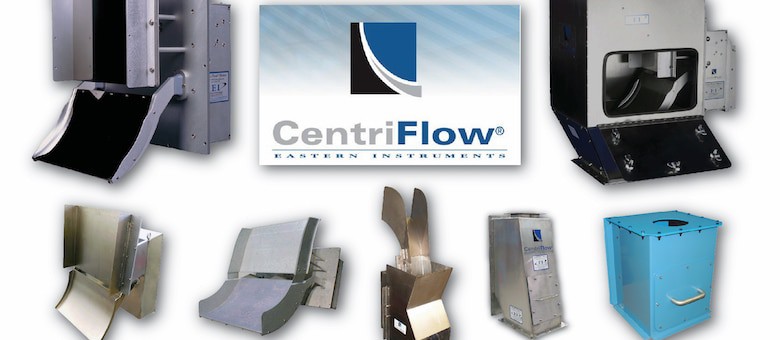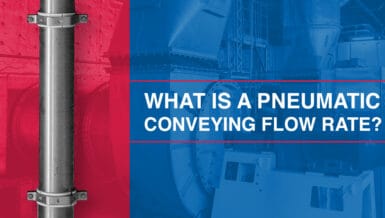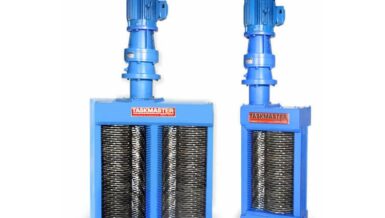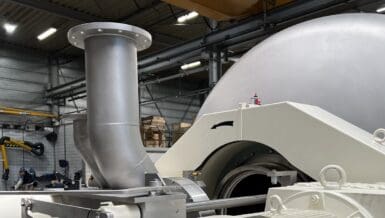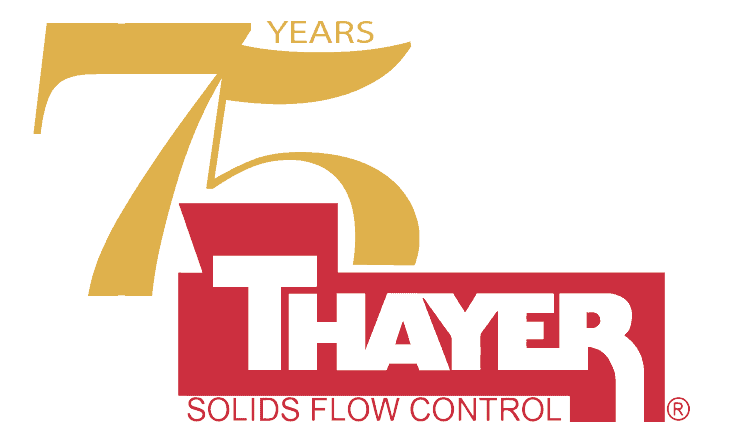Typically, gravimetric flow meters are very accurate methods of in-process flow measurement as they offer a truly dynamic flow measurement rather than a calculation based on assumptions of key variables like density or particle size. Besides being accurate, some gravimetric flow meters offer the ability to measure highly pulsating flows, have small space requirements, and are relatively easy to maintain and repair. Several of the challenges of accurate flow measurement are listed below, along with the ways that certain gravimetric flow meters accommodate them.
Product Buildup
If not addressed, product buildup on key components can cause a variety of difficulties for flow meters including zero shifts that negatively affect accuracy, contamination or sanitation concerns, or even meter failure if the buildup is caused by a corrosive or hazardous product. Clean-up and maintenance for these types of applications can be both costly and time-consuming. While most gravimetric flow meters are affected by product buildup, some devices, such as the CentriFlow meter from Eastern Instruments have unique options that minimize and even eliminate buildup altogether. A variety of flow surface options are available, including PTFE liners or Teflon Coatings that promote the proper flow of material. For particularly powdery applications, Vibration options or Compressed Air options are also available that facilitate product movement off the measurement pan.

Wear
Some metering devices utilize extensive mechanical designs with numerous moving components to measure the flow of product. With extended use, these mechanical components can wear and break over time. Repair costs or on-hand spare part requirements can be quite costly. With Weigh Belts and Coriolis Meters – both good examples of highly mechanical devices – certain failure modes can result in the stoppage of the meter and thus, flow through them. In such cases, the meter would either need to be bypassed, or the operation of the production line would have to be suspended. To alleviate flow stoppage or meter bypass concerns, some gravimetric meters, including the CentriFlow Meter, are installed in chutes that allow product flow to continue even if the meter is not functioning properly. These types of devices often have minimal moving parts and thus, have minimal spare part requirements and maintenance costs.
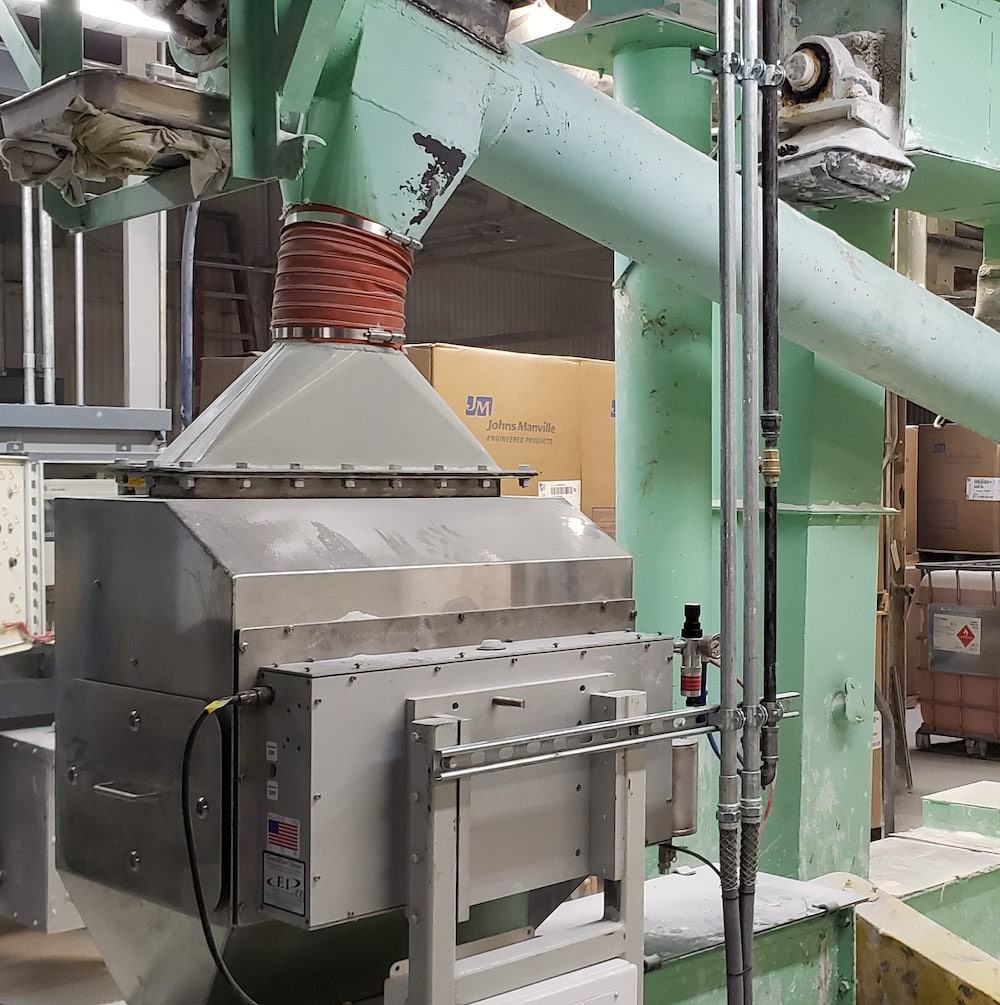
Assumption of Density or Other Variables
For many mass flow measurement devices, variables such as product size, product temperature, or even density are assumed to be constant. Of course, they very rarely are. Many factors, for instance, can affect bulk density, including changes in moisture content, environmental temperature, or even changes in the process itself. Measurement devices that assume bulk density, like many Volumetric measurement devices, Doppler devices, and Ultrasonic flow meters are thus, only as accurate as of the bulk density assumption. In contrast, Gravimetric measurement devices generally measure a true force rather than computing flow based on assumed variables. The CentriFlow Meter, for example, measures the centripetal force of product traveling over the curved measurement pan, which directly correlates to the products’ mass flow. Because the measurement of the meter is a true force-based measurement, it is NOT dependent on product density, particle size, product shape, or even particle elasticity and so changes in these parameters will have no effect on the measurement accuracy.
Pulsating Flows
Pulsations or fluctuations in flow rate can occur due to system variations, or simply from the natural pulsations of a feed device such as screw conveyors or rotary valves. Impact Meters are very susceptible to changes in flow rate, as any change will affect how the product is presented to the measurement plate. If the flow rate drops too low, the product can bounce around in the measurement area, or may not impact the measurement plate at all. For devices such as Weigh Belts, that tend to “average” flow rates across an interval, instantaneous changes in flow may not even register. For gravimetric flow meters such as the CentriFlow Meter, flow rate feedback is near-instantaneous, meaning that even when pulses completely stop the flow, they can accurately report flow rate and total.
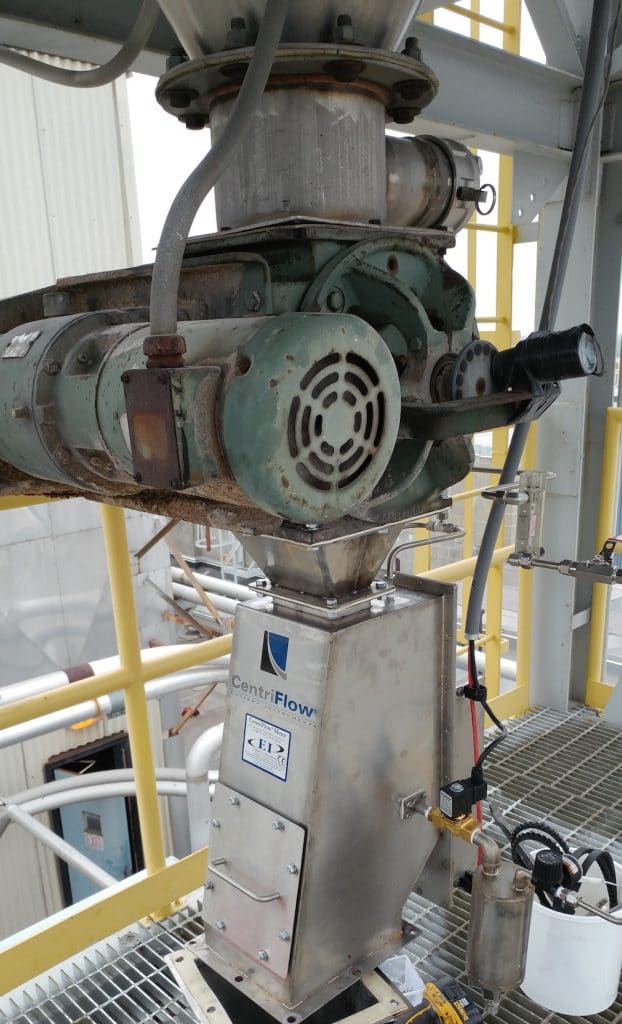
Space Limitations
With space in plants often at a premium, the space needed for proper installation of a flow measurement device may be non-existent. Some metering devices, such as Coriolis meters and weigh belts, may have expansive footprints while others, like impact meters, may require extensive infeed requirements for proper installation. Often, rather than rearranging existing equipment and exhausting precious time and resources, many plants simply forgo flow measurement altogether. In comparison, some gravimetric devices such as the CentriFlow Meter have relatively small vertical footprints of under 3 feet for some applications. With no upstream or downstream requirements, the meter is typically mounted directly under existing feed devices to minimize footprint requirements even further.




